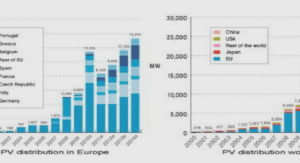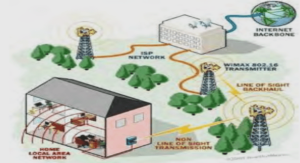Effect of Serine phosphorylation on oligomeric structure and localization of DmHsp27
The NTR of vertebrate and plant sHsps has previously been described as a determinant of chaperoning activity and substrate specificity (Basha et al., 2006, Heirbaut et al., 2014). At least, in vertebrate sHsps, post-translational modifications such as phosphorylation of serine residues found in the NTR are believed to affect the association/dissociation equilibrium of sHsps oligomers and lead to chaperone function activation (Haslbeck et al., 2015, Hayes et al., 2009, Ehrnsperger et al., 1997, Shashidharamurthy et al., 2005).
DmHsp27 is present in up to four isoforms according to the tissue and developmental stage (Marin et al., 1996b). It has been reported to be phosphorylated at NTR on at least two serines (S58 and S75) (Bodenmiller et al., 2007, Zhai et al., 2008, Morrow and Tanguay, 2015). Whether serine phosphorylation affects the structure of DmHsp27 is an open issue. To study the effect of serine phosphorylation on the oligomeric structure and localization of DmHsp27, we constructed phosphomimetic and nonphosphorylatable mutants. To mimic phosphorylation serine (S) residues (S58 and/or S75) were substituted by aspartic acid (D) (S58D, S75D and S58/75D). To block phosphorylation, serine (S) residues (S58 and/or S75) were substituted by nonphosphorylatable alanine (A) (S58A, S75A and S58/75A). The migration profile of DmHsp27, phosphomimetic and nonphosphorylatable mutants on native gels was compared. As reported previously (Moutaoufik et al., 2016), DmHsp27 forms two populations of oligomers with apparent molecular weight of 725 and 540 kDa. Phosphomimetic and nonphosphorylatable mutants showed the same populations as wild type DmHsp27 with a light shift for phosphomimetic mutants due to the negative charge of aspartic acid (D) (Fig 4.1A). All mutated constructs demonstrated the equivalent chaperone-like activity to the wild type protein with different substrates (Fig 4.1B and C).
It has been reported that phosphorylation of human HspB1 and HspB5 is a mechanism for nuclear localization in unstressed cells (den Engelsman et al., 2013). The role of post-translational modifications on the cellular localization of DmHsp27 was therefore examined by immunofluorescence after transfection in HeLa cells. As previously reported (Beaulieu et al., 1989b, Michaud et al., 2008, Moutaoufik et al., 2016), phosphomimetic and nonphosphorylatable mutants of DmHsp27 showed a nuclear localization and association with nuclear speckles similar to the wild type protein. (Fig 4.1D). These results signify that unlike vertebrate/mammalian sHsps, the two sites of phosphorylation S58 and S75 do not affect the oligomerization equilibrium nor the intracellular localization of DmHsp27.
Figure 4.1: Phosphorylation effect of on oligomerization and localization of DmHsp27.
A- Native gradient (4-12%) polyacrylamide gel electrophoresis of recombinant DmHsp27 wild-type, phosphomimetic and nonphosphorylatable serine mutants. Positions of protein markers with molecular weights are shown on the left.
B and C- Preventing aggregation of luciferase and insulin using phosphomimetic and nonphosphorylatable mutants. Data are representative of three independent experiments with error bars corresponding to the standard error of the mean.
D- Intracellular localization of DmHSP27 and its phosphomimetic and nonphosphorylatable mutants in transfected Hela cells. Forty-eight hours post-transfection, HeLa cells were fixed, permeabilized, and processed for immunofluorescence using antibodies against DmHsp27 (green). Nuclei were counterstained with DAPI. Scale bar is 10 µm.
Further characterization of NTR in DmHsp27
The N-terminal region of sHsps is generally considered as being poorly conserved at the sequence level. Alignment of NTR of DmHsp27 with some human, murine, fish and Methanococcus sHsps shows high conservation of two residues (F29 and G30 in DmHsp27) (Fig 4.2A). We next examined the effect of these conserved residues within the NTR on the oligomeric structure and localization of DmHsp27. A deletion of the first 86 amino acids of the N-Terminal region (Del_Nter), had a striking effect on the oligomeric equilibrium, which showed a wide band (from 480 to 146 kDa) and one extra band in the region of dimer (Fig 4.3A). This mutant failed to prevent heat-induced aggregation of luciferase (Luc) (Fig. 4.3B), citrate synthase (CS) (Fig 4.3D), L-malate dehydrogenase (MDH), (Fig 4.3E) and DTT-induced aggregation of insulin (Fig. 4.3 C). Accordingly, the NTR of DmHsp27, as seen in other sHsps, is essential for oligomerization and chaperone activity at least for the substrates tested. To further investigate residues that are important for the oligomeric structure and the chaperone-like activity of DmHsp27, we used blast similarity of NTR-DmHsp27. The obtained sequences all belong to insect sHsps. Alignment of these sequences helped to delineate a conserved sequence motif (FGXG) from phenylalanine 29 to glycine 32 in DmHsp27 (Fig 4.2B).
Figure 4.2: Sequence analysis of the N-terminal region of different sHsp
The alignment was made using Muscle (Edgar, 2004). The conserved residues are darkly highlighted in the alignment.
A- Multiple sequence alignment of the NTR of DmHsp27 with l(2)efl from Drosophila melanogaster, human (HspB1, HspB4, HspB5 and HspB6), Mouse (CryAA and CryAB), zebrafish (CryAA_DANRE and CryAB_DANRE) and Methanococcus maripaludis C6 (Hsp20_METM6).
B- Multiple sequence alignment of the NTR of sHsps obtained using blast similarity of NTR-DmHsp27. Sequence from Drosophila melqnogaster_Hsp27, Drosophila simulans_Hsp27, Drosophila yakuba_Hsp27, Drosophila erecta_Hsp27, Drosophila ananassae_Hsp27, Drosophila persimilis_Hsp27, Drosophila willistoni_Hsp27, Dosophila albomicans_Hsp27, Drosophila busckii_Hsp27, Drosophila buzzatii_Hsp27, Drosophila sulfurigaster-albostrigata_Hsp27, Drosophila virilis_Hsp27, Drosophila mojavensis_Hsp27, Drosophila grimshawi_Hsp27, Drosophila repletoides_Hsp27, Bactrocera dorsalis_Hsp20, Ceratitis capitata_Hsp27, Bactrocera dorsalis_Hsp27, Musca domestica_Hsp27, Stomoxys calcitrans_Hsp27, Lucilia cuprina_Hsp27, Sarcophaga crassipalpis_Hsp25.
Analysis of a deletion construct eliminating these four residues (del_FGFG) on a native gel, showed that the absence of this region affected the oligomeric equilibrium forming considerably large oligomers (Fig 4.3A). The same construct prevented heat aggregation of Luc, CS and MDH efficiently as DmHsp27 wild type (Fig 4.3B, D and E). Surprisingly, in non-heat condition when using insulin as a substrate, the del_FGFG construct was more efficient in prevention of DTT-induced aggregation of insulin than the WT protein (Fig 4.3 C).
Figure 4.3: N-Terminal region is essential for oligomerization and chaperon-like activity.
A- Native gradient (4-12%) polyacrylamide gel electrophoresis of recombinant DmHsp27 and mutants without N-terminal region and after deletion of FGFG motif at 20°C.
B, C, D and E- Prevention of aggregation of luciferase, insulin, citrate synthase and L-malate dehydrogenase using deletion of N-terminal region or deletion of 29-32 FGFG motif. The standard error calculated from 3 sets of independent experiments. ** indicates P<0.01; **** indicates P<0.0001.
Dissecting the FGFG (29-32) motif
Since deletion of residues FGFG (29-32) induces formation of a large oligomer, we investigated this region more carefully using single point mutations. Specifically, we focused on F29 (present in all sequences examined) and F31 (less conserved), two residues with large side chains. Phenylalanine in both positions was mutated to an alanine, a smaller amino acid (F29A and F31A), or to an amino acid (tyrosine) that mimicked the size of the original amino acid but altered the hydrophobicity (F29Y and F31Y). The highly conserved glycines G30 and G32 were mutated to alanine (G30A and G32A) and to a positively charged larger amino acid arginine (G30R and G32R). Mutations in F31 (F31A and F31Y) (Fig 4.4A) or in G30 and G32 (G30A and G32A) (Fig 4.4B) had no effect on oligomerization as shown by the presence of two bands like wild type DmHsp27. However, F29A, F29Y, G30R and G32R showed dramatic changes in oligomeric size as seen for deletion FGFG (29-32) (Fig 4.4 A and B).
Figure 4.4: Effects of FGFG residues in oligomerization and chaperon-like activity.
A and B- Native gradient (4-12%) polyacrylamide gel electrophoresis of recombinant DmHsp27 and NTR mutants (F29A; F29Y, F31A, F31Y, G30A, G30R, G32A and G32R) at 20°C. Positions of standard protein markers are shown on the left.
C, D, E and F- Preventing aggregation of luciferase, insulin, citrate synthase and L-malate dehydrogenase using NTR mutants (F29A; F29Y, F31A, F31Y, G30A, G30R, G32A and G32R). Data are representatives of three independent experiments. ** indicates P<0.01; *** indicates P<0.001, **** indicates P<0.0001.
The size estimation by native gel electrophoresis was confirmed using SEC for DmHsp27, F29A, F29Y, G30R and G32R mutants. As seen in figure 5, the profile of DmHsp27F29A on Superose 6 gave two peaks (Fig 4.5A). The first one eluted at 13 ml and corresponded to a molecular mass of 800 kDa while the second one eluted at 14.6 ml and had a molecular mass of 540 kDa. For this mutant we noted that the peak #1 corresponding to 800 kDa was more abundant than the peak #2 of 540 kDa. For DmHsp27F29Y the profile on Superpose 6 shows one peak eluted at 13 ml (800 kDa) and a shoulder after the main peak at 14 ml (Fig 4.5B). While the R30G and R32G mutants show a single peak at 11ml corresponding to 1100 kDa (Fig 4.5C and D).






